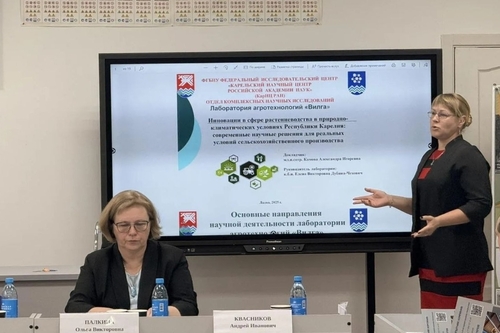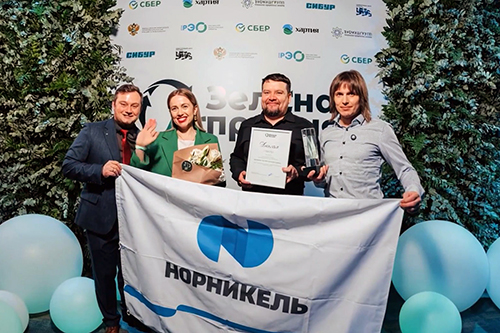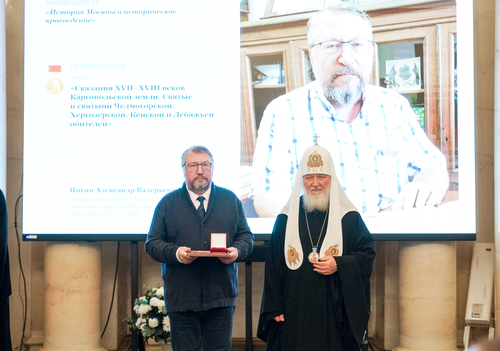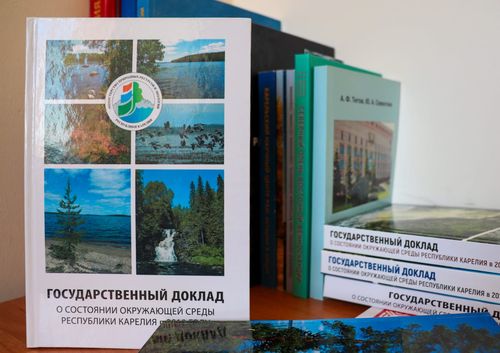State Report on the Environment in the Republic of Karelia is ordered by the Republic’s Ministry of Natural Resources and the Environment. This important yearbook has been published for 30 years. During 17 of them, the editorial board was headed by Andrey Gromtsev, Leading Researcher at the Laboratory for Landscape Ecology and Forest Ecosystem Protection (Forest Research Institute KarRC RAS). Other members of the editorial board are Chief Researcher from the Institute of Biology Oleg Kuznetsov, Leading Researcher from the Institute of Economics Anna Kurilo, and Leading Specialist from the Karelian Ministry of Natural Resources and the Environment Elena Polina.
– Annual monitoring and assessment of the environmental situation in the republic are a must. They help take notice of unfavorable phenomena and evaluate the risks they are fraught with. E.g., peak heat was recorded last year: the air temperature in Petrozavodsk on June 22nd reached +34.3 degrees Celsius – the highest ever in the history of observations, – Andrey Gromtsev remarks.
As demonstrated by the Report, 2021 generally featured high meteorological instability with abnormal phenomena. In the first quarter of the year, substantial cooling periods (-27 – -38 degrees) repeatedly alternated with the temperature rising above zero. May was noted for abrupt weather swings. Starting June 20, Karelia experienced unprecedented heat. The region suffered a dramatic deficit of rainfall. This situation caused an upsurge of wild fires: their number in 2021 grew to 302 versus 141 in 2020. The area affected by fires increased 37-fold: 19 341 hectares versus 520 ha in the previous year.
The number of dangerous weather phenomena in 2021 totaled 17 – almost thrice that of 2020.
Describing the conditions for the human population, the authors of the yearbook mention that there operated 59 wastewater treatment facilities in settlements of the republic. Most of them are in need of overhaul and renovation. Water supply fulfilling quality standards was available to 408 000 people — 70% of the total population. Water pipelines in settlements are over 70% worn out, which affects the water quality.
Like in the previous yearbook, the public health section reports the situation with the new coronavirus infection. According to official data, the COVID-19 rate was 12 060 cases per 100 000 population, which is 1.6 times that of the 2020 level. The overall incidence in Karelia in 2021 increased by 9.4%.
The report is made up of nine large sections and an appendix with a listing of regional- and local-level protected areas. The edition, as Andrey Gromtsev says, will be of interest for a very wide readership.
– The State Report is needed for the work of all sorts of specialists: for decision-makers, who need to know what is happening in the region to deliver timely response, as well as, for instance, for school teachers, who tell their students about the republic’s nature and socio-demographic situation, – Editor-in-Chief summed up.
The Report is available in electronic form (in Russian): link.
News
See also:

December 8, 2025
Staff of the Vilga Laboratory presented scientific developments in agritech at the year-end 2025 meeting at Agriculture Ministry
Staff of the Vilga Agrotechnology Laboratory of the Department for Multidisciplinary Research KarRC RAS took part in the session “Results of the agricultural season 2025 and plans for 2026” held in the Village of Ladva. They presented the laboratory’s major research areas and scientific developments.
Staff of the Vilga Agrotechnology Laboratory of the Department for Multidisciplinary Research KarRC RAS took part in the session “Results of the agricultural season 2025 and plans for 2026” held in the Village of Ladva. They presented the laboratory’s major research areas and scientific developments.

December 5, 2025
Olga Bakhmet proposed KarRC RAS as the host for the scientific conference on the study of Karelia’s water bodies
Doctor of Biological Sciences Olga Bakhmet took part in a meeting of the Council on Fish and Fisheries Sector Development held in Petrozavodsk on December 2nd. Active participants of the meeting were representatives of the executive and legislative authorities of the Republic of Karelia, scientists, and members of the business community. The meeting focused on prospects for the development of the sector in Karelia, utilization of seaweed resources in the White Sea, increasing production volumes, and introducing new types of products.
Doctor of Biological Sciences Olga Bakhmet took part in a meeting of the Council on Fish and Fisheries Sector Development held in Petrozavodsk on December 2nd. Active participants of the meeting were representatives of the executive and legislative authorities of the Republic of Karelia, scientists, and members of the business community. The meeting focused on prospects for the development of the sector in Karelia, utilization of seaweed resources in the White Sea, increasing production volumes, and introducing new types of products.

December 4, 2025
Project to roll out artificial instream egg incubators wins the Green Prize 2025
The Russian Environmental Operator awarded the winners of the Green Prize 2025. The project recognized as the best in the "Sustainable Practices in the Agricultural Industry" category is "An Integrated Technology with Artificial Nests for Fish Egg Incubation". The devices for the reproduction of young salmonid populations were designed at the Karelian Scientific Center RAS and tested in collaboration with Kola Mining and Metallurgical Company JSC (part of Nornickel). The incubators are being successfully used on rivers in northern Karelia and the Murmansk Region.
The Russian Environmental Operator awarded the winners of the Green Prize 2025. The project recognized as the best in the "Sustainable Practices in the Agricultural Industry" category is "An Integrated Technology with Artificial Nests for Fish Egg Incubation". The devices for the reproduction of young salmonid populations were designed at the Karelian Scientific Center RAS and tested in collaboration with Kola Mining and Metallurgical Company JSC (part of Nornickel). The incubators are being successfully used on rivers in northern Karelia and the Murmansk Region.

December 3, 2025
Literature scholar Alexander Pigin was awarded Makarius’s Prize for his treatise “17th-18th Century Tales of the Kargopol Land”
Leading Researcher of the Institute of Linguistics, Literature and History KarRC RAS Alexander Pigin was awarded The First Prize in Memoriam of Metropolitan Macarius (Bulgakov) of Moscow and Kolomna for his treatise “17th-18th Century Tales of the Kargopol Land. Saints and Sanctities of Chelmogorskaya, Hergozerskaya, Kenskaya and Lebyazhiia Monasteries”. The Macarius Prize is one of the main awards in the humanities in Russia.
Leading Researcher of the Institute of Linguistics, Literature and History KarRC RAS Alexander Pigin was awarded The First Prize in Memoriam of Metropolitan Macarius (Bulgakov) of Moscow and Kolomna for his treatise “17th-18th Century Tales of the Kargopol Land. Saints and Sanctities of Chelmogorskaya, Hergozerskaya, Kenskaya and Lebyazhiia Monasteries”. The Macarius Prize is one of the main awards in the humanities in Russia.




